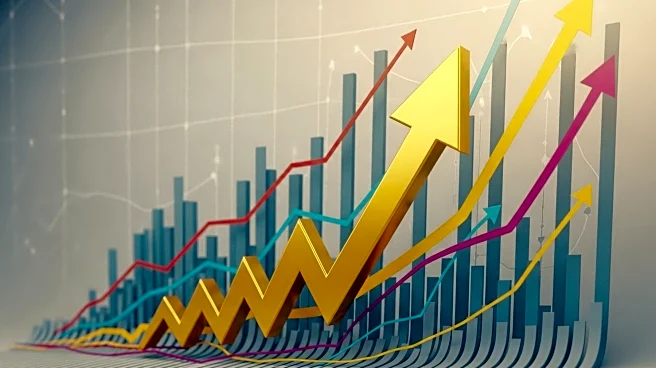What's Happening?
A recent report from VantageScore highlights a concerning trend in the U.S. credit card market, where average balances have risen to $6,500 as of August 2025. This increase represents a $96 rise from the previous year and a $67 jump from the prior month. The report indicates that credit utilization rates have surged to over 30%, a level considered dangerously high. This trend suggests that Americans are increasingly relying on credit cards to cover basic expenses due to persistent cost-of-living pressures. The high credit utilization rate signals that emergency borrowing has become routine, potentially leading to unmanageable debt cycles. With credit card APRs exceeding 21% on average, the compounding interest makes it difficult for borrowers to pay down their balances, especially if they are only making minimum payments.
Why It's Important?
The rise in credit card debt and utilization rates is a significant indicator of economic stress among U.S. consumers. As more individuals rely on credit to manage everyday expenses, the risk of financial instability increases. High credit card debt can lead to long-term financial challenges, including damaged credit scores and limited access to future credit. This situation also reflects broader economic issues, such as stagnant wages and rising living costs, which are forcing consumers to depend on credit for survival. The financial strain on households could have ripple effects on the economy, potentially impacting consumer spending and overall economic growth.
What's Next?
To address the growing credit card debt, consumers may consider strategies such as debt consolidation, balance transfers, or credit counseling. Debt consolidation can help reduce interest charges by combining multiple balances into a single fixed-rate loan. Balance transfer cards offer a temporary reprieve from interest charges, allowing borrowers to focus on paying down the principal. Credit counseling provides structured debt management plans to help individuals regain control of their finances. These approaches can help mitigate the impact of high credit card debt and prevent further financial deterioration.










